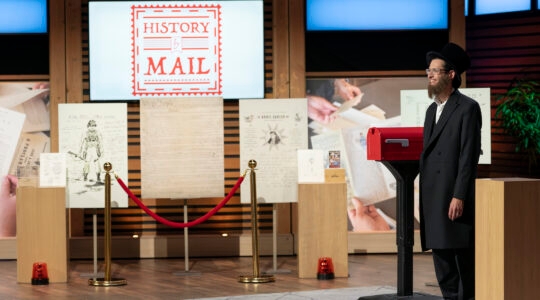There are all sorts of strange cameos and guest-starring roles in the Talmud. Just like a sitcom, where, unexpectedly, Larry David might be having lunch with Mayim Bialik, the ancient rabbis also had guests show up in unexpected places–for instance, the sage Rabbi Meir’s debate with Cleopatra.
In the Babylonian Talmud (in Sanhedrin chapter 11), Rabbi Meir states that the dead will be resurrected following the coming of the Messiah. Then Cleopatra inquires: “When the dead come back to life, will they be naked or clothed?”
Although her question sounds fatuous, the rabbis do not dismiss it. In fact, Rabbi Meir replies: “If a grain of wheat is planted naked and emerges clothed in a sheath, how much more so a righteous person?”
Other famous non-Jews also make cameo appearances in ancient Jewish texts. Caesar–which could have been any of several Caesars from Rome–also appears in Talmud Sanhedrin, although his role is less illuminating (he’s cast as a sort of antagonist to Rabban Gamaliel).
One outright hero of the Talmud was a Roman emperor named Antoninus. Interested in Judaism, he studied it with the assistance of Rabbi Judah the Prince, and the two grew to be a close friends. In some accounts (Talmud Yerushalmi Megillah), Antoninus eventually converted to Judaism. In others (Midrash Tanhuma), he doesn’t convert, but becomes so impressed with Judah that he builds an altar to the Jewish God. Antoninus is thought by many scholars to be Marcus Aurelius, a general (and later emperor) of Rome. Others think that he was Marcus Antonius…the husband of Queen Cleopatra.
JTA has documented Jewish history in real-time for over a century. Keep our journalism strong by joining us in supporting independent, award-winning reporting.





